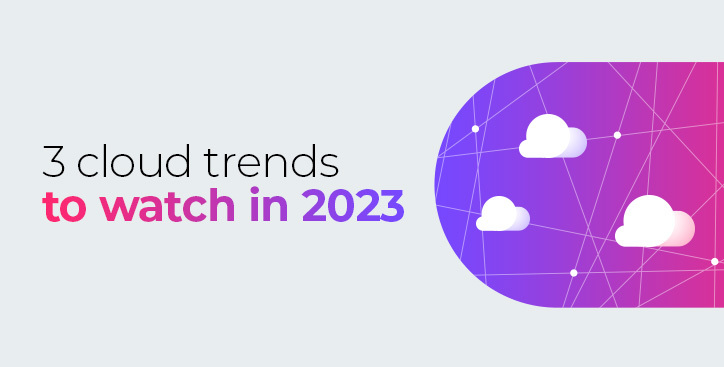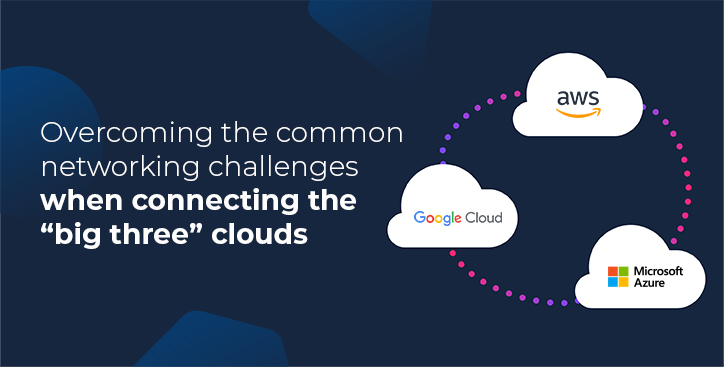Three cloud trends to watch in 2023
By Alex Hawkes|19 December, 2022

Digital transformation continued apace in 2022, with the public cloud helping businesses reduce the financial risk of innovation and drive agility when they need it most.
A quote from Dave McCarthy, Research Vice President at IDC, sums up the sentiment of the year: "Cloud is no longer considered a location but rather an operating model for future innovation."
With that in mind, here are three of the key cloud trends to watch in 2023…
Cloud gaming
The cloud has certainly changed the way we consume music and video, birthing streaming giants like Netflix and Spotify, but while cloud-based gaming has received a lot of attention over the years, it has yet to secure a solid foothold. Still, 2023 could be the year things change.
Big names like Microsoft, Sony, Nvidia, and Amazon have all made significant investments into cloud gaming, with mixed results. Google recently, for example, mothballed its Stadia service after failing to get traction.
One of the biggest challenges remains end user connectivity. Whereas one-way streaming services for music and movies require a certain amount of bandwidth to buffer the media, the interactive nature of gaming requires both upload and download capacity as well as a low-latency connection to avoid the dreaded ‘lag’.
Rapid adoption of 5G could be the critical enabler here, with estimates from Ericsson that 67% of cloud gamers will have 5G devices in the next 5 years, growing to 100% before the end of the decade and making low-latency connections far more accessible than over fixed line connectivity.
According to gaming researcher NewZoo, this could result in 31.7 million paying users of cloud gaming services by the end of 2022, spending a combined $2.4 billion. By 2025, this forecast could grow to 86.9 million paying users spending a combined $8.2 billion.
Latency considerations are critical on the back end infrastructure as well. Whether it’s building highly accessible massively multiplayer gaming services like League of Legends, or allowing consumers to rent virtual high-end gaming PCs that live in the cloud, the latency on connections between data centres or infrastructure assets can make a cloud gaming business a success or a failure.
For those with a requirement to keep latency in check, the public internet is a great example of what not to use to interconnect or connect your endpoints to your data centres, as it is a mish mash of networks from different operators connected together where service is best effort rather than guaranteed.
When it comes to the internet, you cannot guarantee against any sort of latency, jitter, or specific pathing. This makes it entirely unsuitable as a way for gaming businesses to connect their private data centres and public cloud assets.
Cloud gaming in 2023 will be about the end-to-end low latency connection.
Into the Metaverse
Just as successful cloud gaming services leverage the power of the cloud to ensure a seamless interactive user experience, developers are increasingly using the same technolgies to support the creation of the Metaverse.
Everyone has their own take on the Metaverse – but we like this description: An ecosystem of persistent interconnected worlds that builds on the concept of massively multiplayer online games, with things like ‘land’ ownership, construction of buildings, and commerce.
Data centre interconnect and cloud interconnect - the need to connect one cloud or data centre to another - is at the heart of these new interconnected global business models.
With the Metaverse comes a requirement for low-latency, high-reliability connectivity – such becoming as a private network unaffected by the fluctuations of public internet, resulting in a far more stable and secure connection.
Building a Metaverse requires highly available and scalable capabilities, and as the Metaverse matures, it will add more layers of complexity and integrate with more ecosystems.
With user numbers predicted to run into the millions and a global audience, Metaverse providers will look to native interoperability of multiple cloud-based services.
To facilitate this, edge networking applications will be deployed as close as possible to the end user, meaning much lower latency times and packet loss, with these edges connected back to the cloud or data centre by private connections.
Through these direct connections, an organisation has a more reliable and low-latency path to the cloud that delivers a more reliable and consistent network performance for those important applications and services.
Multi-cloud acceleration
In 2022, multi-cloud enabled organisations to take a best-of-breed approach to cloud infrastructure, using each provider for its own specific strengths.
For example, Oracle Cloud is becoming known for bare metal applications, while Google Cloud Platform (GCP) is strong in AI, Machine Learning, and cognitive systems. Azure, on the other hand, has deep integration with other Microsoft products.
According to the Flexera 2022 State of the Cloud Report, enterprises are broadly embracing this multi-cloud strategy, with an estimated 89% of companies adopting a multi-cloud approach.
Furthermore, the growing popularity of containerised applications means that in the event of changes to service levels, or more cost-efficient solutions becoming available from different providers, applications can be quickly ported across to new platforms, helping avoid vendor lock in.
Multi-cloud adoption is expected to continue on its explosive trajectory in 2023. And with it comes new networking considerations.
Businesses in 2023 will be more mindful of the costs associated with connecting to the cloud.
Legacy WAN architectures are typically not cloud friendly and put considerable burden on the organisation to maintain.
Appropriate connectivity for SaaS, IaaS, and PaaS is not easily achieved on traditional infrastructure and a suboptimal WAN can actually degrade the performance of
cloud-based applications and adversely affect the end-user experience, as well as being expensive.
Which is where Network-as-a-Service (NaaS) platforms like Console Connect can help in 2023 – enabling businesses to spin up Layer 2 and Layer 3 connections into multiple clouds almost instantaneously to meet demand.
.jpg)





.jpg)

